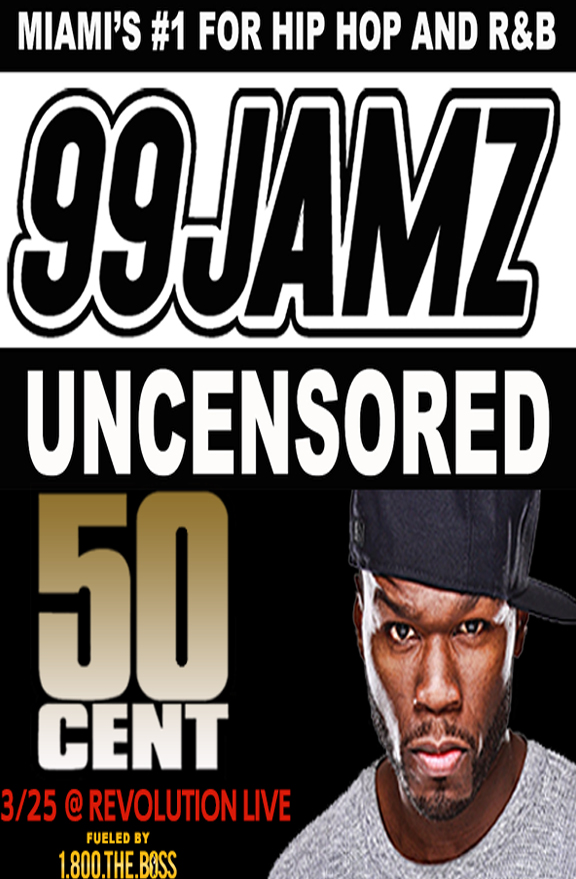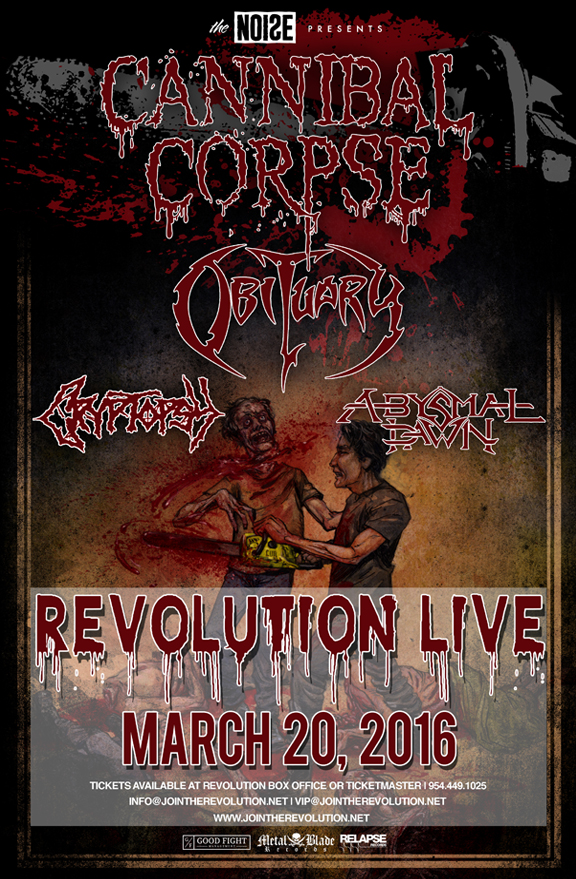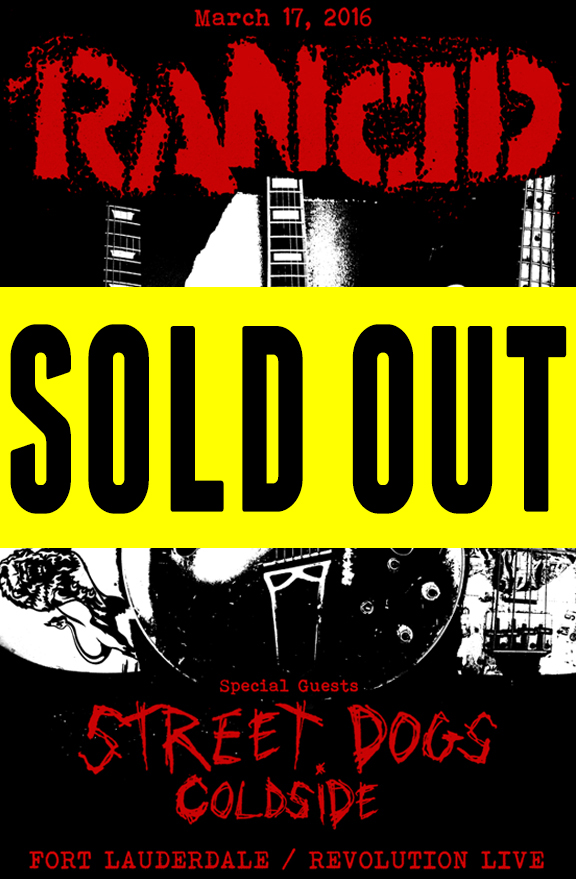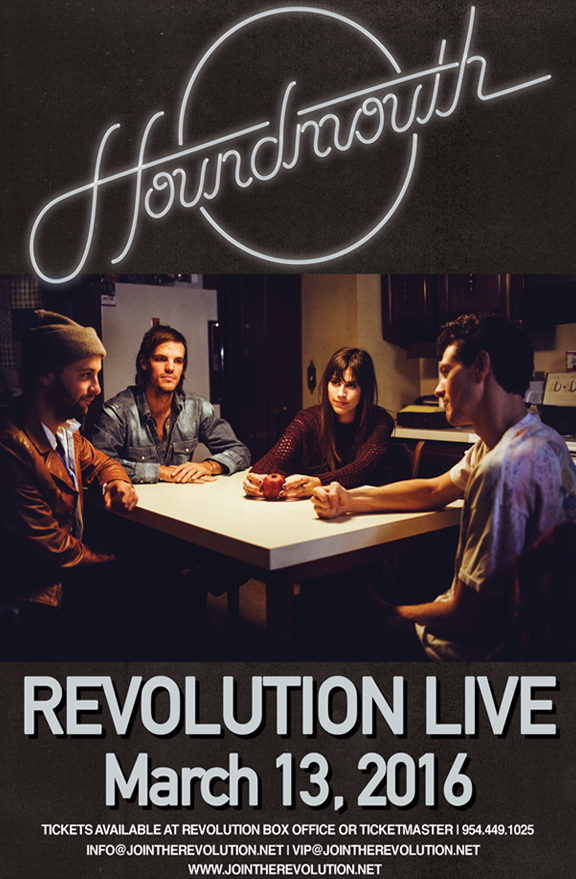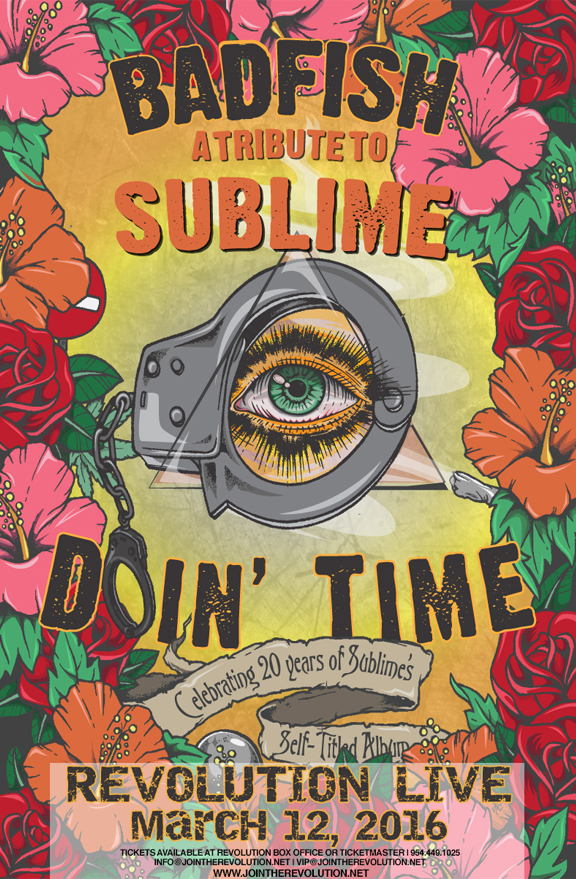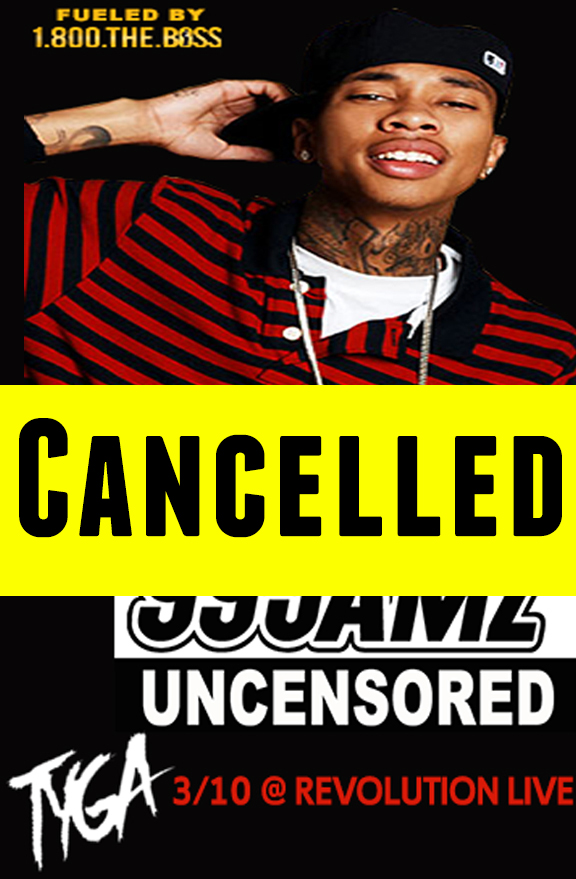Grand like Lorde but also sunshine-bright like Katy Perry, singer and songwriter Daya first climbed the charts as a 16-year-old high school junior. Born and raised in Pittsburgh, Pennsylvania, she began taking piano lessons at the age of three, and moved on to voice lessons at the age of ten. Songwriting came later, and in 2014 she signed with the Z-Entertainment label based on her demos. A year later, her single “Hide Away” took off thanks to early adopters like Tyler Oakley, Perez Hilton, and other superstar bloggers. In 2015, Daya released her debut, self-titled EP on Artbeatz.
Logic
Sir Robert Bryson Hall II (born January 22, 1990), known by his stage name Logic, is an American rapper. He was born and raised in Gaithersburg, Maryland. He has amassed a large internet following and is a member of the RattPack, his group of friends that he works with. Logic has released three official mixtapes, most recently Young Sinatra: Undeniable. He is currently signed with the independent record label Visionary Music Group.
Logic was born in 1990 in Gaithersburg, Maryland. His mother is white and his father is black. Throughout his childhood, both of his parents suffered from crack addiction and alcoholism. His father was not a part of his childhood, but they are in contact with each other now. He attended Gaithersburg High School but did not graduate. Since his mother didn’t fight it, Logic was expelled and instead put his time and effort into pursuing his music career. In hindsight, he wishes he would have stayed in school and received that proper education and always encourages his fans to do so. “I remember telling the kids [at my old high school], ‘All you kids that are here today to watch me speak to you guys have people that actually love you and care about you that make you go to school.’ And I said, ‘There are people in this auditorium as well that have nobody, but you’re still here and those same people are stronger than even I was.’ So education is a real big deal.” Logic left his mother’s home at 17, lived with a friend and got two jobs. Since then, he and his mother are not in constant communication.
At the age of 13, Logic met his mentor, Solomon Taylor. He says Taylor is a humongous part of who he is today. In 2009, Logic was going by the name Psychological because, “One name that really stuck was Psychological. I just loved this word because it was about the mind and I knew that’s what I wanted my music to consist of; something that really challenges the mind.” He released an unofficial mixtape titled Psychological: The Mixtape. under his original stage name. Later on, Logic opened for Pitbull, EPMD, Method Man, Redman, and Ludacris at a show in Maryland. Shortly thereafter, he shortened the Psychological moniker to Logic, which is the science of reasoning, to broaden his horizons.
On December 17, 2010, Logic released his first official mixtape, Young, Broke, and Infamous. Following its release, he dropped three music videos from the project, “Prime,” “Stain in the Game,” and “BackPack”. The mixtape caught the ear of Chris Zarou, who wanted Logic to be a part of his upstart independent record label Visionary Music Group.
Logic released his second mixtape, Young Sinatra, on September 19, 2011. Young Sinatra received a mass amount of positive feedback from multiple sources including XXL. He released music videos for songs such as “Live on the Air,” “Mind of Logic,” and “All I Do”. The All I Do video was the first for Logic to hit over one million views on May 2, 2012. On March 15, 2012, Billboard declared Logic as the Next Big Sound, meaning he was the fastest accelerating artist across the internet gaining fans. On March 20, 2012, Logic officially signed with Visionary Music Group. Logic stated in an interview, “Visionary Music Group is like Roc-A-Fella. Damon Dash, that’s like Chris Zarou of Visionary Music Group, I like to see myself as a Jay. In no way am I arrogant or cocky, I have to see it in order to do it. They did it independent and when they signed with a major, they did it the way that they wanted to do it.” Others signed with VMG include Jon Bellion, Logic’s videographer and photographer GRVTY, and Logic’s producer/DJ 6ix. In July/August 2012, Logic completed his first national headlining tour, the Visionary Music Group Tour, along with Tayyib Ali. The tour sold out 20 of its 25 stops.
Logic released his third mixtape, Young Sinatra: Undeniable on April 30, 2012. On the mixtape, Logic addresses such topics as his future, his fans in various parts of the world, his father’s drug use, getting kicked out of school, and his mother getting stabbed. The overall sound is on a bigger level than his previous work and does an outstanding job at showing his versatility. “Fans tend to think that if you fall in love with an artist because he makes this kind of sound and then he gets bigger and he grows and he starts to make a different sound, ‘He’s changing on us.’ But with me, I created all types of sounds from the get go, so you can never say I’m changing, you can never say I’m going mainstream or I’m selling out.” In an interview, Logic states, “There’s stuff on there for the motherfuckers that don’t pay attention to lyrics and just want to have fun, but every line is constructed with such depth that the real lyricists and nitpickers have something to listen to and analyze as well.” One of Logic’s main goals for his music is to make music with a positive message, telling people to follow their dreams, whatever it may be, all while walking with honor and peace. March 2013 will be Logic’s first time touring Europe. His fourth mixtape, Young Sinatra: Welcome to Forever, is slated for a spring 2013 release.
Logic first got into rap by watching Kill Bill at the age of 15 and finding out that RZA from the Wu-Tang Clan did the score. He started listening to Wu-Tang and delved deeper into hip-hop from there. The first hip-hop album he bought was The Roots “Do You Want More?!!!??!” Other big influences include his mentor Solomon Taylor and friend Lenbo, who let Logic live with him and make music in his basement.
Although he is a hip-hop artist, Logic is heavily influenced by Frank Sinatra. As a child, his mother made him watch old black and white movies, which formed his love for Frank Sinatra and influenced how he represents himself with the way he speaks and how he interacts with others with peace, love, grace, positivity, honor, and valor. Because of Frank Sinatra, Logic says he does his best to carry himself in an intellectual and kind manner. Just as Sinatra had the Rat Pack, Logic has his RattPack (an acronym for “Real All The Time” and consisting of friends such as his manager Chris, his producers 6ix and OB, and friend/fellow rapper C Dot Castro). Logic describes Sinatra as a man who was, “suave, debonair, honorable, respectable, with valor and grace.” Logic’s female fans are also called BobbySoxers just as Frank’s were. He describes BobbySoxer girls as beautiful, intelligent, elegant, educated, classy, hardworking, young women. Logic also refers to himself as “Young Sinatra.”
Logic has said that a never ending list of artists has influenced him including Wu-Tang Clan, Big L, A Tribe Called Quest, Jay-Z, Drake, J. Cole, and Nas. He has also stated that all music inspires him, including The Red Hot Chili Peppers, John Coltrane, and Miles Davis. He says that all the classic artists are what really gave him a foundation, but the newer artists are also his inspirations, and he brings the best of both worlds to his music. Logic says, “I love all subgenres within hip-hop and all genres of music and I think that’s what allows me to make the music that I do, because of my appreciation for the music.”
Dub Village Sundays ft: Dezarie with Stephen Marley
Roots empress Dezarie blessed the reggae community in 2003 with the deliverance of one of the most potent musical albums of all time “Gracious Mama Africa.” Released on the Afrikan Roots Lab record label, this album emerged from the seeds planted on her amazing debut album of 2001 “FYA”.
Gracious Mama Africa transports the incredible voice of Dezarie to a whole new level – the highest heights. Her foundation is firmly established on songs such as “Travelers” and the title track. The brilliance and clarity of Dezarie’s voice is reverently unveiled on “Exhalt.” Gracious Mama Africa abounds with pleas for social justice and racial equality with selections like “Poverty,” “Strengthen Your Mind” and “Justice”.
But to this listener, the strength and power of Dezarie is most strikingly displayed in her condemnation of ‘so-called’ civilization. “Gone Down,” “Not One Penny,” “Law Fe De Outlaw”, “Slew Dem An Done” and “Judgment Come” all deliver conscious punches that penetrate the soul. After receiving Atlanta’s “Best New Female Reggae Artist” award in 2001, Dezarie returned to her native island of St. Croix. Since that time, she has been working closely with Midnite’s Ron Benjamin.
2008 saw the release of “Eaze The Pain,” an album in which Dezarie’s devotion for H.I.M. provide the book-ends for poignant political and social messages on songs like “The Truth,” “Set Da Flame” and “For The People By The People.” A similar template is employed on the 2010 release “The Fourth Book.”
Her newest release “Love In Your Meditation” takes the music of Dezarie to an even higher plane with outstanding vocals and harmonies punctuating powerful lyrics on selections that include “Download De Criminal,” “Return To Sender” and “Constructing Destruction.” Once again, Ron Benjamin provides exquisite instrumentation, production and vocal harmonies on this album that includes the hair-raising ballad “Stronger.”
50 Cent
50 Cent was one of the biggest stars hip-hop produced in the 2000s, a muscled and menacing, yet imperturbably cool presence with a near-mythic backstory. The protégé of Dr. Dre and Eminem, 50 Cent made music that was both gangsta and good fun. His 2003 debut, the nine-times-platinum Get Rich or Die Tryin’, made him a star. Though his popularity diminished somewhat by the end of decade, 50 Cent’s bank account didn’t suffer since he also spent the 2000s establishing himself as a hip-hop entrepreneur.
He was born Curtis Jackson in Queens, NY, on July 6, 1975, and was raised by his single mother, a crack dealer, until she was murdered when he was eight. Living with his grandparents, 50 Cent competed as an amateur boxer but soon became a crack dealer himself. Jackson was arrested while in 10th grade, but by eighteen, he was making $5,000 a day selling crack and heroin.
50 Cent began rapping in high scool. In 1996, a friend introduced him to Run-D.M.C.’s Jam Master Jay, who was starting a record label, JMJ Records. Jay produced an album for 50, though it went unreleased. 50 later recorded an album for Columbia Records in 2000, Power of the Dollar. (The label declined to release that one, too, though it’s been heavily bootlegged.)
In April of that year, 50 Cent was shot nine times outside his grandmother’s home; in a 2003 cover story for Rolling Strone, Touré chronicled the aftermath of the shooting: “[50] spent thirteen days in the hospital, then staggered out on a walker. Six weeks later, he began walking on his own. Now life was more precious to him. He began working on his body with endless push-ups, pull-ups and sit-ups that turned him from kinda fat to chiseled. But more important for an MC, there was now a large, squarish hole through the left side of his lower jaw and a piece of bullet left in his tongue. He’d lost a bottom tooth and a U-shaped chunk of his gums, but his lazy tongue and the hole in his jaw gave him a slur like no one in hip-hop. ‘There’s a different sound now when I talk, ’cause of the air around the tooth,’ 50 says. ‘Gettin’ shot just totally fixed my instrument.'”
50 set about releasing a cavalcade of menacing, diss-heavy mixtapes — No Mercy, No Fear, recorded with his G-Unit crew in 2002, is one of the best. 50 soon caught the attention of Eminem, who touted 50 as “the illest motherfucker in the world.” Along with partner Dr. Dre, Eminem signed 50 to Shady Records and Aftermath Entertainment. While gearing up for his debut, 50 released Guess Who’s Back?, a commercially available collection of his early work that finds a middle ground between the off-the-cuff rhymes of his mixtapes and the more polished assault of his official studio albums.
Get Rich or Die Tryin’ had a boatload of advance buzz; a feud with rapper Ja Rule also helped 50 increase his profile. Nobody seemed surprised when became a blockbuster. “Wanksta,” one of Jam Master Jay’s last productions, and the Dre-produced party anthem “In Da Club” tore up the pop charts, and the album was full of slick, powerful hooks—the half-sung, half-shouted chants of “Life’s on the Line,” the slick steel drum on “P.I.M.P.” 50 gets stoned, gets laid and fires off gunshots like it’s nothing, all the while employing a steady, laid-back cadence.
After conquering the world, 50 became a business, scoring his own G-Unit clothing line, his own PlayStation game, a semi-biographical movie (also called Get Rich or Die Tryin’), and even his own Vitamin Water flavor. His record label, G-Unit, released a stream of high-profile, no-bullshit gangsta rap from The Game, and a handful of releases from his G-Unit stable. On Forbes magazine’s 2007 list of “Hip Hop Cash Kings,” 50, worth $32 million, ranked second behind Jay-Z.
But while 50’s profile remained high, his modus operandi of “get even richer or die trying” had a deleterious affect on his music. On The Massacre, 50 leaned on his “cuddly thug” persona, serenely seething about cocaine coming out of his pores but also luring girls into the “Candy Shop,” crooning to strippers on “Disco Inferno” or getting downright goofy with Eminem on “Gatman And Robbin’.” The album debuted at Number One
By 2007’s Curtis, 50’s appeal had slipped. The album was released the same day as Kanye West’s Graduation, and SoundScan showed that rap fans in 2007 were definitely more eager to lap up West’s self-introspection than 50’s circa-2003 bullets-and-braggadocio. 2009’s Before I Self Destruct should have been received as 50’s triumphant comeback record — but this no-fanfare, all-meat-no-gristle record didn’t receive nearly as much buzz as past 50 albums.
Saosin featuring Anthony Green
California-based Saosin burst onto the post-hardcore scene in March 2003 with their explosive screamo-tinged debut EP, Translating the Name, on Death Do Us Part. For the recording, the band was comprised of vocalist Anthony Green, drummer Pat McGrath, guitarist/vocalist Justin Shekoski (ex-As Hope Dies), and former Open Hand members bassist Zach Kennedy and guitarist/vocalist Beau Burchell. The band’s name comes from a Chinese proverb that means “small heart,” as in love cautiously. Shortly after the EP’s completion, Kennedy exited (going on to join Ashlee Simpson’s band) to be replaced by Chris Sorenson, and since McGrath had been enlisted solely to play drums on the album, Saosin weren’t solidified until that July with the addition of permanent drummer Alex Rodriguez (also formerly of Open Hand).
Even though Translating had been out since March, the band didn’t make its on-stage debut until June. Their powerful live performance and heavy Internet presence were coupled with high praise for their EP (comparing them to the emotional catharsis of Glassjaw), cultivating an impressive underground following. The guys hit the road nationwide that summer with Boys Night Out and Anatomy of a Ghost. Green parted ways with the band in February 2004 for personal reasons, later going on to front the emo/post-hardcore outfit Circa Survive. The other bandmembers pressed on without him, however, and though they had yet to find a permanent replacement, stayed true to their Warped Tour obligation with Story of the Year’s Phil Sneed taking the mike. By the summer’s end, Cove Reber had become the band’s new singer. Saosin spent time on winter’s Taste of Chaos tour before hooking up with Capitol Records in March 2005. After numerous compilation appearances, a self-titled EP of demos and live cuts appeared that August; summer was spent on co-headlining dates with Anberlin. Saosin continued work on their eponymous full-length debut with Howard Benson, finally releasing the long-awaited disc in September 2006. Plenty of touring followed well into the next year, including dates with bands like Senses Fail, Bleeding Through, A Static Lullaby, and Poison the Well. In March 2008, Saosin released Come Close, a live CD/DVD. The band toured relenetlessly playing festivals and headline gigs throughout 2007 and 2008. Despite their touring schedule, they managed to record and complete In Search of Solid Ground, their proper sophomore full-length effort, and release it in September of 2009.
Rusted Root
The Movement
“The Movement, means a new work ethic to me – it’s going from the industrial age to the individual spiritual age. I feel everyone should devote all their actions to all that is love, healing and pragmatic. We’re seeing the growing pains of this right now…the world is split…some people are fearful and fighting it with all their might… Rusted Root is trying to help with this…this is our movement!!” shares Rusted Root founder, front man, songwriter, singer/guitarist Michael Glabicki. Having collaborated with one another for two decades, Rusted Root, has honed the perfect combination of musical intuition, freedom and virtuosity, which has allowed them to organically shape shift their music into their own distinct and undeniable vision. With eight albums under their belt, over three million records sold worldwide and countless nights on the road, Rusted Root, transcends age, generations, cultures and musical styles. Their music has been featured in films likeIce Age, Twister and Matilda, TV shows like New Girl, Ally McBeal, Charmed and Chuck as well as recent Enterprise Rent-A-Car commercials. Bassist and vocalist Patrick Norman says, “From the very first time we played music together, I knew we had something special. The music and the enjoyment of creating and playing with one another I feel is the driving force behind this band.” The powerhouse ensemble’s sweat-inducing and hypnotic live performances have allowed them to tour alongside everyone from Santana, Dave Matthews Band, The Allman Brothers Band, Robert Plant and Jimmy Page’s reunion tour and countless others. Rusted Root’s Shanachie debut, The Movement (10/30/12), is an energized and poetic collection of originals that capture the Pittsburgh based unit at their best. Glabicki says, ” The Movement is an extremely joyous recording with seriously deep undertones. It is a culmination of everything we have learned, or have tried to learn, over our entire career. It truly is a career record for us.”
The Movement is a tribute to Rusted Root’s fans. “The title itself is a testament to the community surrounding our music,” says vocalist and percussionist Liz Berlin. Rusted Root created the “Fortunate Freaks Unite! We Are Rusted Root” campaign, a fan-funding campaign where fans contributed to the making of the album, while receiving some cool opportunities with the band. Glabicki adds, “Rusted Root is a state of mind shared and explored by many people- we are a community that supports one another.”
The Movement transports listeners though an array of emotional and musical terrain, creating one seamless journey. “There is real space on this album, you can hear the room, us breathing, laughing, playing music together,” says Liz. The pulsating, cathartic and uninhibited “Monkey Pants” opens the CD. “I have these little dance moves I do on stage every night,” confesses Liz. “I almost feel like a monkey puppet on a string when we play this song, it’s like the groove pulls my body in very specific ways.” Glabicki adds, “The song embraces our unique human animal- focusing on our ability to spiritualize, sexualize, and dream our own existence.” The album continues to entice with “Cover Me Up,” which begins and ends with gorgeous guitar and percussion interplay and an enchanting Calypso and African vibe. Glabicki shares, “The guitar work on this song is really extraordinary, Colter Harper’s parts are beautifully layered with mine, his many trips to Africa really show through on this song.” Glabicki’s and Liz’s vocals tease and slither through the melody as the band crescendos to a bluesy showdown.
The camaraderie, sheer love for musical experimentation and a desire to break down musical boundaries comes full circle on “The Movement,” the title track and first single. “Our drummer, Preach Freedom came up with such an interesting drum pattern for the song and along with the tambourines, foot stomps and claps, it’s like nothing I’ve ever heard before,” exclaims Glabicki. “It was really great having Lucy Stone singing background vocals with us on this one. She came up with a couple harmony ideas that I worked off of to create the vocal arrangement for the song, it feels like exciting new territory for us.”
Another highlight on The Movement is the rhythmically charged and scintillating “In Our Sun.” The trance-like rhythmic patterns and Sub-Saharan drenched chanting reach a fevered pitch and then fade like a mirage.
Liz explains that the members of Rusted Root are drawn to and have explored virtually every form of music. “I am very inspired vocally by anything from Indian to African to Middle Eastern sounds and scales having grown up with a lot of Hebrew music” she says. Michael Glabicki’s cites the Bee Gees, Elvis Costello, Neil Young, Tony Childs, Black Keys, Black Sabbath and various Afro Pop music as among his influences. Glabicki explains the song “In Our Sun” started out as an experiment and was created with several great Pittsburgh drummers. He was playing around with the song and started listening to it backwards; that’s where the fun began. “There’s an acoustic guitar that was used solely to record the drums through its magnetic pick up which caused the strings to ring out creating a drone effect which decided the key for the song. Since most of the vocals were then recorded on the tour bus you can hear the bus humming and rattling throughout the song too.” Glabicki’s vocals shine on the lilting ballad “Fossil Man,” and on “Fortunate Freaks” Rusted Root lets it all go and rocks out hard with the song’s energizing bridge. “Sun And Magic” showcases dazzling guitar and bass lines that shimmer like a summer breeze. Glabicki’s signature Tremelo picking and acoustic-electric guitar amplification shine throughout The Movement. Rusted Root gets down right gritty on “Up And All Around” while “Something’s On My Mind” continues to solidify their place as one of the most versatile and innovative bands on the creative music scene.
“I was in my first semester of college. I had just returned from a trip to the war torn country of Nicaragua and had come back very depressed. It was the physical type of depression where at times I couldn’t move my arms…I remember after one of those spells I picked up the guitar and wrote a song,” recalls Glabicki. “I can remember feeling like I had lifted out of my dead body and I could move so freely. Shortly after that night I dropped out of college to start a band – my first real band – Rusted Root.” It was the early 90s and it wasn’t long before Rusted Root garnered a rabid fan base with their unique blend of roots music and world rock. Although they have toured the world, the city of Pittsburgh still pulses through their veins. Patrick explains, “Living in our hometown helps keep us grounded and focused.” Liz adds, “Pittsburgh means so much to us as a band. The city, the people, the community are the womb where Rusted Root gestated, birthed and has thrived all these years. It is the home we can always come back to.” Glabicki adds, “Pittsburgh is home. It’s family. It is our protection. It’s the perfect place to create something original. Pittsburgh is full of working class hero’s.” In 1992 Rusted Root released Cruel Sun independently and two years later, while signed to Mercury, they released their platinum-selling breakthrough, When I Woke, which spawned the Top 40 hit “Send Me On My Way,” that went on to chart on Billboard’s Hot 100. In 2004, the band released the double album Rusted Root Live on their own Touchy Pegg label, following the re-release of the newly re-mastered Cruel Sun in 2003. Rusted Root continued to tour relentlessly between the release of Cruel Sun and the 2009 release of Stereo Rodeo.
Now with the release of The Movement, the journey continues. Liz says, “When we first got together as a band there was a groundswell of community, love and support that has taken us on a movement through our lives and together as a band. This movement has never stopped all these years!” Glabicki concludes, “I hope this music will help to lighten people’s load and elevate them!! Making this record was a lot more intense than any of our other recordings. It was the first time that I produced and engineered a Rusted Root recording. It kind of upped the ante for me, there was no way I could step on eggshells and not be brutally honest, it was do or die. We were blessed to work with some really great musicians and singers. It was also awesome having some of the Fortunate Freaks supporters visit the studio to get us out of any routine we might have been in. Our goal is to create a ritual with the fans, something that is truly healing.”
Cannibal Corpse with Obituary, Cryptopsy, Abysmal Dawn
“If vomit were a movie, this would be the soundtrack,” wrote one critic of Cannibal Corpse‘s music, some of the most extreme, violent death metal sounds and subject matter ever committed to tape. Reveling in splatter-horror imagery in their often indecipherable lyrics, the group’s graphic album artwork and song titles like “Meat Hook Sodomy,” “Entrails Ripped from a Virgin’s Cunt,” “Fucked with a Knife,” and so on, have — not surprisingly — attracted a fair amount of controversy and sometimes resulted in their albums being banned. However, their over the top extremity has won them a rabid cult following and made them one of the most popular death metal bands of the ’90s; sticking with what works, the band didn’t alter or develop its style much over the decade, although fans didn’t seem to mind.
Cannibal Corpse were formed in Buffalo, New York, in 1988, their lineup composed mostly of musically active scenesters: vocalist Chris Barnes, guitarists Bob Rusay and Jack Owen, bassist Alex Webster, and drummer Paul Mazurkiewicz. Musically, they were closest to Slayer, although more extreme metal bands like Death also played a role in their sound. A 1989 demo helped the band secure a contract with Metal Blade Records, which released their debut album,Eaten Back to Life, in 1990. A cult following began to build behind the group with albums like 1991’s Butchered at Birthand 1992’s Tomb of the Mutilated. Bob Rusay was fired in 1993 and replaced with ex-Malevolent Creation guitarist Rob Barrett, who joined the group in time to appear as a club band in the Jim Carrey film Ace Ventura: Pet Detective.
Barrett debuted on record with 1994’s (relatively) more accessible The Bleeding, which proved to be Barnes‘ final album; 1996’s Vile featured ex-Monstrosity vocalist George “Corpsegrinder” Fisher. Cannibal Corpse soldiered on through the decade, returning in 1998 with Gallery of Suicide. Bloodthirst followed a year later, and in 2000 the band issued both a video and CD titled Live Cannibalism(their second concert video but first official live album). Gore Obsessed arrived in 2002, followed by the obsessively packaged box set/DVD 15 Year Killing Spree. Their ninth album of all-new material, Wretched Spawn, was released in 2004, followed by Kill in 2006. In 2008, the band went back into the studio with producer Erik Rutan (ofHate Eternal), emerging early the following year with the band’s highest-charting album, Evisceration Plague. Two years later the gore-metal masters released the live DVD Global Evisceration before returning with the all-new studio album Torture in 2012. A Skeletal Domain, the band’s 13th long-player, followed in 2014.
Rancid
One of the cornerstone bands of the ’90s punk revival, Rancid’s unabashedly classicist sound drew heavily from the Clash’s early records, echoing their left-leaning politics and fascination with ska, while adding a bit of post-hardcore crunch. While some critics dismissed Rancid as derivative, others praised their political commitment, surging energy, and undeniable way with a hook. And, regardless of critical debate over their significance, the band’s strengths made them perhaps the most popular neo-punk band after Green Day and the Offspring. Their third album, 1995’s …And Out Come the Wolves, made them a platinum-selling sensation and an inescapable presence on MTV and modern rock radio. While they never translated that success into an enormous blockbuster record (like the aforementioned bands who hit the mainstream first), that wasn’t necessarily their ambition, choosing to stay with the independent punk label Epitaph and the creative freedom it allowed them. That decision helped them retain a large, devoted core audience as revivalist punk-pop began to slip off the mainstream’s musical radar.
Rancid were formed in 1991 by San Francisco Bay Area punk scenesters Tim Armstrong (guitar/vocals) and Matt Freeman (bass). Lifelong friends and longtime punk fans, the two had grown up together in the small working-class town of Albany, near Berkeley; they’d also played together in the legendary ska-punk band Operation Ivy, Armstrong as “Lint” and Freeman as Matt McCall. After Op Ivy disbanded in 1989, Armstrong and Freeman spent a few weeks in the ska-punk outfit Dance Hall Crashers, as well as Downfall; Freeman later briefly joined the hardcore band MDC. Meanwhile, Armstrong was waging a battle with alcoholism (but, fortunately, winning), and to help keep his friend occupied, Freeman suggested they escape their day jobs by forming a new band, which became Rancid. The duo added drummer Brett Reed, Armstrong’s roommate and a familiar presence on the Gilman Street scene where Operation Ivy had cut their teeth. Just a couple of months later, Rancid were performing live around the area, and in 1992 they released a five-song debut EP on Lookout! Records.
The EP caught the attention of Epitaph Records founder/Bad Religion guitarist Brett Gurewitz, and Epitaph signed Rancid to a highly favorable contract guaranteeing the group a generous amount of creative control. The band’s eponymously titled, first full-length album arrived in 1993, pursuing an uptempo hardcore/skatepunk style with few hints of early British punk. Rancid had been seeking a second guitarist, and Green Day’s Billie Joe Armstrong even played live with the group at one show. They pursued Lars Frederiksen, a Bay Area resident who’d joined a later incarnation of U.K. Subs and was performing with the band Slip; Frederiksen initially declined Rancid’s invitation to join, but when Slip disbanded, he quickly changed his mind and came along on Rancid’s first tour. Frederiksen made his recording debut on the early-1994 EP Radio Radio Radio, a side dalliance on Fat Wreck Chords. Released later that year, Let’s Go was the album that made Rancid’s name in the punk underground. It marked the beginnings of their fascination with the 1977-era London punk scene, particularly the Clash, and it also provided their first widespread exposure when MTV picked up on the video for the single “Salvation.” Let’s Go quickly went gold, and with the breakout mainstream success of Green Day and the Offspring that year, major-label interest in Rancid quickly escalated into a full-fledged bidding war (even Madonna’s Maverick imprint got in on the action). Ultimately, Rancid decided that no major could offer them the level of decision-making power that Epitaph had given them, and stayed right where they were.
Rancid scored a major success with their next album, 1995’s …And Out Come the Wolves, whose title was a reference to the near-predatory interest in signing the band. The Clash fetish was even more pronounced, augmented with a greater interest in the original Two-Tone ska revival the Clash had helped influence (bands like the Specials). “Ruby Soho” was a major MTV and radio hit, and “Time Bomb” and “Roots Radicals” were hits in their own right. The album went platinum and made Rancid one of the most visible punk bands around. They played the 1996 Lollapalooza Tour, and afterward took a short break, their first since becoming a quartet. During that time, Freeman played with former X singer Exene Cervenka in Auntie Christ, while Armstrong set up the Epitaph subsidiary Hellcat; he and Frederiksen both began doing production work for other bands they hoped to spotlight.
Rancid returned in 1998 with the even more ska-heavy Life Won’t Wait, a guest star-loaded affair that featured members of ska bands the Specials and Hepcat, Dicky Barrett of the Mighty Mighty Bosstones, dancehall reggae star Buju Banton, and Agnostic Front vocalist Roger Miret. While it didn’t cross over on the level of …And Out Come the Wolves, it demonstrated that Rancid retained a substantial fan base. For the 2000 follow-up, their second self-titled release, the group largely scrapped its ska-punk side, recording a visceral, hardcore-influenced album that blasted through 22 songs in under 40 minutes (in contrast to its two lengthy predecessors). Perhaps for that reason, Rancid received a highly positive response from the punk community. The band’s installment in the BYO split series arrived in March 2002 alongside NOFX, each band covering six of the other’s songs. Rancid’s next full-length, Indestructible, followed a year later; though technically released through Hellcat, the album was their first that got additional support from a major label via Warner Bros. The highly personal album (songs were inspired by the deaths of family and friends, and Armstrong’s bitter 2003 divorce from Distillers frontwoman Brody Dalle) hit number 14 on the Billboard charts, as “Fall Back Down” did well on radio and MTV.
Following the record’s release, Rancid went on something of a hiatus, its members working on various side projects: Armstrong continued work with the Transplants, his band with Rob Aston and blink-182 drummer Travis Barker, and collaborated with various artists, including P!nk; Frederiksen further played with his side band Lars Frederiksen & the Bastards; Freeman briefly joined Social Distortion from 2004-2005. By the spring of 2006, a revitalized Rancid regrouped; they toured worldwide starting that summer to the delight of fans. Several shows, however, had to be postponed and rescheduled after Frederiksen collapsed on-stage in Montreal, apparently suffering a seizure. Soon enough, though, he was back and the band continued on. Rancid promised a new record for the following year, and Armstrong released his first solo album, A Poet’s Life, that fall through Epitaph by releasing songs online for free download over the course of several months. With the band getting back on track, it then came as a shock in November 2006 when Reed announced he was leaving Rancid after 15 years; the split appeared to be amicable and he was soon replaced behind the kit by ex-Used drummer Branden Steineckert. After taking some time to look back at their luminous history with a B Sides and C Sides compilation, a music videos collection, and an online webisode retrospective dating back to the bandmembers’ days in Operation Ivy, Rancid returned to the studio to record 2009’s Let the Dominoes Fall at George Lucas’ Skywalker Sound Studio with Brett Gurewitz producing.
It would be another five years before fans got another Rancid album. The band entered the studio in 2011 and did some recording, but Armstrong eventually abandoned the sessions in favor of doing another Transplants album. One new Rancid track from the sessions, bluntly titled “Fuck You,” was released in 2012. That same year, the massive online-only box set Essentials compiled their back catalog on 7″ vinyl. In 2013, Transplants released their third album, In a Warzone, following which Rancid got back together to finish their eighth album. Again produced by Gurewitz, the back to basics effort, Honor Is All We Know, was released in late 2014.
Houndmouth
Boasting a sound that’s informed by vintage country rock and the melodic side of indie rock, Houndmouth was formed in 2011 in New Albany, IN, a town across the river from Louisville, KY. Founding members included guitarist/vocalist Matt Myers, keyboardist/vocalist Katie Toupin, bassist/vocalist Zak Appleby, and drummer/vocalist Shane Cody. The driven group of musicians quickly built a loyal following based on its fervent live shows, and was soon sharing stages with like-minded bands such as Drive-By Truckers and the Lumineers. In 2012, the group issued a self-titled 4-song EP, andiIn 2013, Rough Trade Records released the band’s full-length debut, From the Hills Below the City, a hearty collection of ragged country-informed rock & roll. Houndmouth returned in the spring of 2015 with Little Neon Limelight, another set of lean country boogie and late night laments.
Badfish: A Tribute to Sublime
The phenomenon known as Sublime, arguably the most energetic, original and uniquely eclectic band to emerge from any scene, anywhere, ended with the untimely death of lead singer, guitarist and songwriter Brad Nowell in May of 1996. But encompassing the sense of place and purpose long associated with Sublime’s music, Badfish, a Tribute to Sublime continues to channel the spirit of Sublime with a fury not felt for some time. What separates Badfish from other tribute bands is that they have replicated Sublime’s essence, developing a scene and dedicated following most commonly reserved for label-driven, mainstream acts. Badfish make their mark on the audience by playing with the spirit of Sublime. They perform not as Sublime would have, or did, but as Badfish does!
Tyga
With a rangy set of friends from Fall Out Boy to Lil Wayne, it was obvious from the start that Tyga was not your everyday rapper from Compton. After recording a mixtape and promoting it around the city, Tyga ran into his cousin, Gym Class Heroes member Travis McCoy, in the Flight Club L.A. sneaker shop. Their conversation went from shoes to rappers, and as Travis’ group went from unknowns to MTV stars, he would always remember that talk and his cousin’s unique style. Travis signed Tyga to his Bad Squad label and then invited him along when the punk-pop group Fall Out Boy came calling. Travis and Tyga would appear on the remix to Fall Out Boy’s “Arms Race,” which also featured Kanye West, Paul Wall, Skinhead Rob, Lupe Fiasco, and Lil Wayne. When the remix became a hit, Tyga found himself performing the track on MTV’s Video Music Awards in 2007. He soon entered the studio to do some guest shots for his new friend Lil Wayne before shifting the focus to his solo career. His first single became the hooky “Coconut Juice,” a S*A*M & Sluggo production that borrowed a bit of Harry Nilsson’s hit “Coconut.” As the club track was climbing the charts in the spring of 2008, Tyga was hard at work on his debut album, No Introduction, which was officially released that June. He returned in 2012 with Careless World, an album that featured Game, Snoop Dogg, and Drake among its guests. Lil Wayne, Chris Brown, Rick Ross, and 2 Chainz landed on his 2013 effort, Hotel California — his second straight Top Ten album. Among his many guest verses were a pair of hit collaborations with Chris Brown, namely “Deuces” and “Loyal.” The two opted to take their success to another level with Fan of a Fan: The Album, issued in 2015. Later in the year, Tyga followed up with his fourth proper album, The Gold Album: 18th Dynasty, as well as Fuk What They Talkin Bout, a mixtape. Those two releases hovered around the Top 20 of the rap chart.
August Burns Red and Between the Buried and Me
August Burns Red
Jake Luhrs—vocals; JB Brubaker—guitar; Brent Rambler – guitar; Dustin Davidson—bass; Matt Greiner—drums
With 12 years as a band under the belt, Lancaster PA’s August Burns Red know what they are doing and what they want to sound like.
Found in Far Away Places, the band’s sixth full-length and Fearless Records debut, is full of unpredictable, unexpected moments that will both surprise and delight the band’s fanbase. With the support of a brand new label, August Burns Red are ready for the next chapter and to chart another period of l growth.
With a solid collection of 5 previous albums, Thrill Seeker (2005), Messengers (2007), Constellations (2009), Leveler (2011), 2013’s Rescue & Restore debuted at No. 9 on the Billboard Top 200 chart, establishing August Burns Red as one of the metalcore scene’s premier bands. They asserted themselves by being a bit sonically different from everyone else in the scene, refusing to rely on alternately sung and screamed vocals to make a point. August Burns Red’s career was built on the back of hard work, word of mouth, and moshable tunes. The band continues to skillfully craft a balance between ferociously heavy sound with empowering lyrical content, while showcasing a rich surplus of inventive guitar riffs, blistering solos, and dynamic drumming.
“We want to be at the forefront of our genre, not following the pack,” guitarist JB Brubaker declared. “We’re are always tweaking our sound and introducing new elements. For that reason, I think that every time we put out a new record, it’s its own beast and new fans keep finding us. They might not have liked our four records prior, but what we’ve become is more up their alley. That’s fine. We evolve and we try not to get stuck in a rut.”
The band bunkered at Atrium Audio in Lancaster, recording once again with Carson Slovak. The album finds singer Jake Luhrs still screaming like he is scaling the bowels of hell, but there are more melodic undertones, along with more guitar melodies, adding further layers to the overall sound. Brubaker labels Found in Far Away Places the band’s “most progressive record” and it’s their longest, clocking in at 55 minutes over 11 tracks.
“This is the next step forward in the direction we are heading,” Brubaker noted. “It’s not a massive departure and it is an August Burns Red record. It’s the latest installment. The next episode. We expanded on our favorite elements of the non-metal parts of Rescue & Restore, and those parts are the surprises the first time you hear it, since you will be like ‘Wow, I was not expecting that.’ Some of it is easier to grasp as a whole, yet faster than some previous records. The songwriting is more cohesive. There are catchier moments that are more hook-oriented.”
Some of the album’s many standouts are “Ghost,” which features a guest vocal from A Day to Remember’s Jeremy McKinnon and “Identity,” which is “a more straightforward August Burns Red song, heavier than granite, but backed by smart guitarwork. “The Wake” opens the album with choppy riffs, guitar squalls, and a rhythmic thrust.
August Burns Red’s Found in Far Away Places charged fiercely into release week, debuting at #4 on the Billboard Top Albums Chart, #9 on the Billboard Top 200, #1 Rock Album, #1 Independent Album, and #1 on iTunes Metal Chart, selling over 29,000 copies in its first week. Found In Far Away Places has been noted by Revolver Magazine as “heavier and more creative than ever”, “an emotionally charged thrill ride of a record,” by Metal Hammer Magazine, while Absolutepunk.net calls the album “a clear contender for Album Of The Year for 2015.” Lead singer Jake Luhrs was featured on the cover of Substream Magazine’s Warped Tour Issue, and the band was featured on the cover HM Magazine’s May issue. Members of August Burns Red were nominated in this year’s Alternative Press Music Awards 2015, and Jake presented the award for ‘Best Guitarist’.



